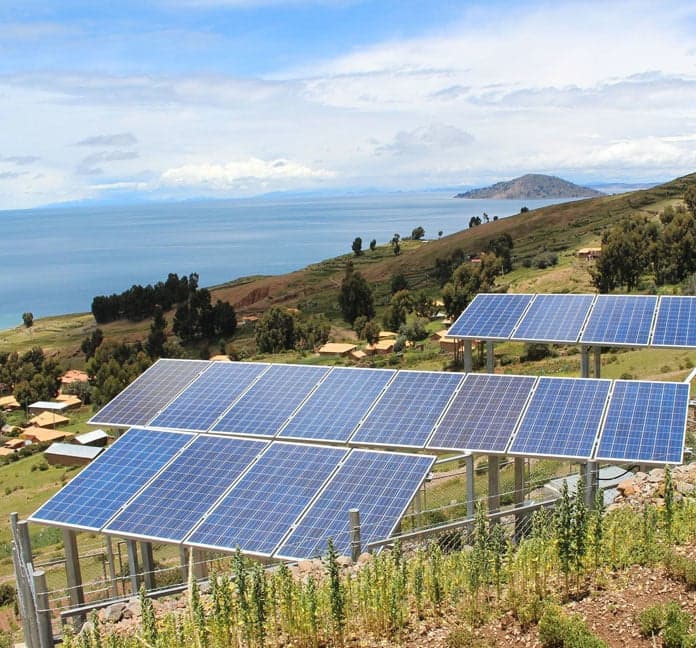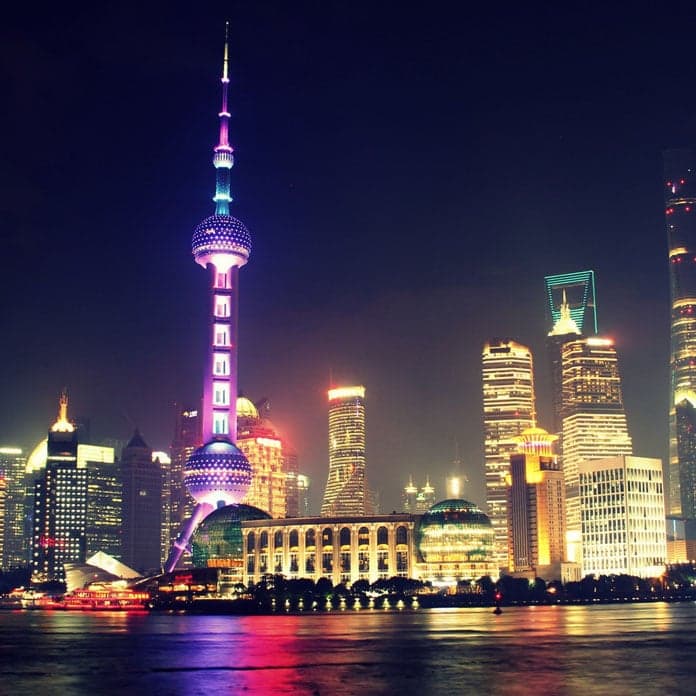Contrary to many people's beliefs, cannabis can be useful as a tool for battling depression, calming nausea from chemo treatments, and practicing spiritual customs. These are just a few of the reasons citizens have been speaking out to their governments worldwide about the legalization of medical marijuana.
globalEDGE Blog Archive May 2017
Publish Date:
On Wednesday, the International Renewable Energy Agency (IRENA) released a report detailing trends in the renewable energy job market. Worldwide, renewable energy employed 9.8 million people last year, which is nearly twice as many compared to 2012. Wind jobs specifically grew by 28%. As global leaders, Brazil, China, Germany, India, Japan, and the United States have the highest number of renewable jobs. Global energy job growth has slowed down in recent years following solar energy declines in Japan and Europe, but IRENA Director-General, Adnan Amin, predicted that by 2030, employment will triple to 24 million.
Publish Date:
The globalEDGE team is excited to share the new Business Hindi Resource Guide. The project, funded by a grant from the MSU International Business Center (MSU-CIBER), was developed by the MSU Center for Language Teaching Advancement (CeLTA) to provide students applying for jobs and internships in India with necessary cultural and linguistic tools. The guide contains seven modules, covering topics such as socio-cultural etiquette, conversations in socio-business situations, business culture etiquette, and reading and interpreting job announcements. The resource guide also includes sample resume formats, sample cover letters, and a glossary of Hindi business terms. Click here to read the guide.
Publish Date:
On May 19, United States President Donald Trump embarked on his first series of foreign trips for the current presidential term. His first stop was Riyadh, the capital of Saudi Arabia, where he met with King Salman bin Abdulaziz, Crown Prince Muhammad bin Nayef, and other members of the Saudi royal family. During the two-day visit, President Trump and King Salman signed arm deals worth an immediate total of $110 billion, with additional promises of further investment over the next decade that will eventually equate to $350 billion. On a wider scale, the arms deals are part of a larger series of potential deals between Saudi Arabia and the U.S, often involving specific corporations from each nation. Collectively, they encompass the energy, defense, technology, chemicals, and mining sectors, signifying initiatives from the Saudi government to diversify its business from oil exports (part of the Saudi Vision 2030 plan established in spring 2016) and establish new trade relations within other industries within the U.S. Following the signings, global aerospace and defense stocks rebounded in value.
Publish Date:
The fifth Copenhagen Fashion Summit took place on Thursday, May 11 to address sustainable development in the fashion industry. Influential representatives from apparel and textiles and retail companies spoke at the event, including the chairman of the board and interim CEO of Tiffany & Co, the President of Global Sourcing at Target, the CFO of Tommy Hilfiger Global and PVH, and the head of sustainability at H&M. Eva Kruse, the CEO of the Global Fashion Agenda (GFA) explained how “today's linear economic model, which sends too many clothes to landfills and incinerators, is simply not sustainable.” She called on all retail and fashion companies to support a circular fashion system and sign the Summit’s Call to Action.
Publish Date:
Counterfeit goods today are found throughout the world; wherever a demand for a product exists, counterfeiters quickly fill the niche. Counterfeiters compete undetected with brand owners, undermine brand profitability, fund the underground economy, and undermine brand reputation. A brand’s long-term success depends on protecting its integrity. Brand owners who do not believe they have a counterfeiting problem likely have not looked. ANY branded product can be counterfeited.
Publish Date:
On Thursday, the U.S. Department of Commerce announced that China and the United States had signed a new trade agreement, named the U.S.-China Comprehensive Economic Dialogue. The trade agreement is a result of ongoing negotiations between the two countries following a meeting between U.S. President Trump and Chinese President Xi Jinping in April. This 100-day action plan contains 10-points to be implemented by both China and the United States. For the United States, the agreement is part of an ongoing attempt to cut the trade deficit with Beijing.
Publish Date:
In the last blog of the leisure industry series, we take a look at the changing music industry.
In previous blog posts, we have analyzed the state of the global music industry, noting the dominance of streaming services as the default method for popular music consumption. As rates from digital and physical music sales remain in decline, revenues from streaming services have risen sharply: worldwide streaming revenues hit a new high of $5.4 billion in 2016. Major services based in various countries—Spotify from Sweden, TIDAL from the Norwegian company Aspiro, Apple Music from the United States, Deezer from France—have seen massive increases in their paid subscriptions, with further growth projected for the next few years. Countries with large music markets, like China, India, and Mexico, have provided large markets of subscribers and listeners. The effects of streaming have played a substantial role in the development of the global music industry—by the end of last year, the industry had accrued revenues of $16.1 billion, reaching its highest rate of growth (5.9%) in 15 years.
Publish Date:
Part four of this week's blog series explores current events in the sports sector of the leisure industry.
A few trends are expected to drive the sports industry in 2017 such as the rapid change in the sports media landscape of content creation and distribution rights due to consumers shifting from cable to digital media. Other trends expected are innovation for game days by enhancing the fan experience outside of the sports venue and the use of augmented and virtual reality to enable teams to become more personalized and integrated with sports fans’ daily lives. In addition, it is expected that data and analytics will continue to drive the more business focused side of the industry.
Publish Date:
Part three of our transport manufacturing blog series examines recent trends in the global film industry.
In recent years, the global film industry has undergone major changes due to increased globalization and the overall growth of the middle class. In the past, two-thirds of box office revenue was generated by the United States alone, but this is no longer the case. Today, 70% of this revenue is generated outside of the U.S., and this is leading to major changes in the way that films are produced and distributed around the world.
Publish Date:
In part two of this week's leisure industry blog series, we look at current trends in the global recreation and tourism sector.
Recreation and tourism have become a fundamental fraction of economies worldwide. The outdoor industry has become a massive economic force, and it is happening in countries all around the world. According to a 2014 study, in the United States alone, an estimated of 29.7 billion dollars in economic activity and nearly 277,000 jobs came from the pockets of visitors at the national parks. Secretary of the Interior, Sally Jewell, stated in an article released in 2015 that "our national parks often serve as economic engines for local communities, drawing tourists from around the world who pump money into area stores, restaurants, hotels and more". Jewell also emphasized the importance of investing in the national parks across the country, stating that it not only preserves and supports communities, but it also promotes economic growth.
Publish Date:
This week, the globalEDGE blog is taking a look at the leisure industry. Each day, our blog series will explore different areas of the global leisure industry, which includes recreation, entertainment, sports, and tourism. Globally, the industry encompasses a wide variety of businesses and companies, from major hotel and resort companies with locations around the world to small mom and pop shops. With the many sectors and businesses, the industry has a major impact on many economies across the world.
Publish Date:
The Xiongan area outside of Beijing has been deemed the newest special economic zone (SEZ) by the Chinese government. Compared to other countries, China has been the most successful in using SEZs to spur investment and growth—specifically by attracting foreign capital. For example, Shanghai's Pudong New Area was established in the early 1900's and is now the nations hub for financial business. However, there are also significant concerns when establishing a special economic zone that have to be taken into account.
Publish Date:
The world is going through a major demographic transition. Population growth is decreasing around the world, while the age distribution is leaning towards the elderly. But how would this alter any economy? Population growth plays a key role in every economy in the world, where a lower population growth rate means that there will be fewer workers and consumers. An aging population would lead to a smaller working-age population, which would decrease the growth of the labor force. Both of these trends result in lower GDP growth.
Publish Date:
According to Kai-Fu Lee, the founder of venture capital firm Sinovation Ventures, robots are likely to replace 50% of all jobs in the next decades. Lee expects this to be the next revolution in the technology industry, even bigger than electricity, the industrial revolution, or internet. Lee has previously held high executive positions with companies including Google, Apple, and Microsoft. When asked if humans will still have a role in the world with machines growing more intelligent, Lee responded that nothing can replace person-to-person social interactions, meaning there is hope for the service industry. Still, artificial intelligence (AI) has been impacting and will continue to impact all aspects of life as we know it.

















